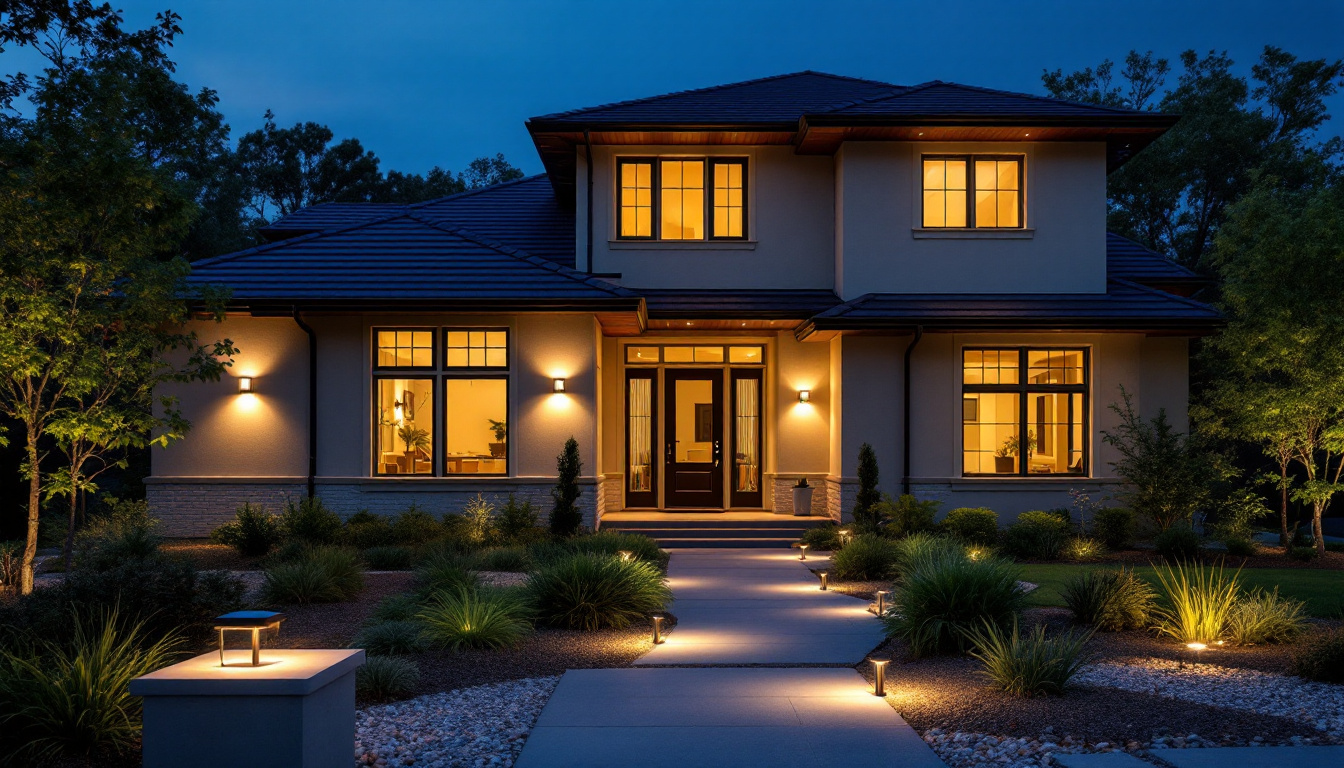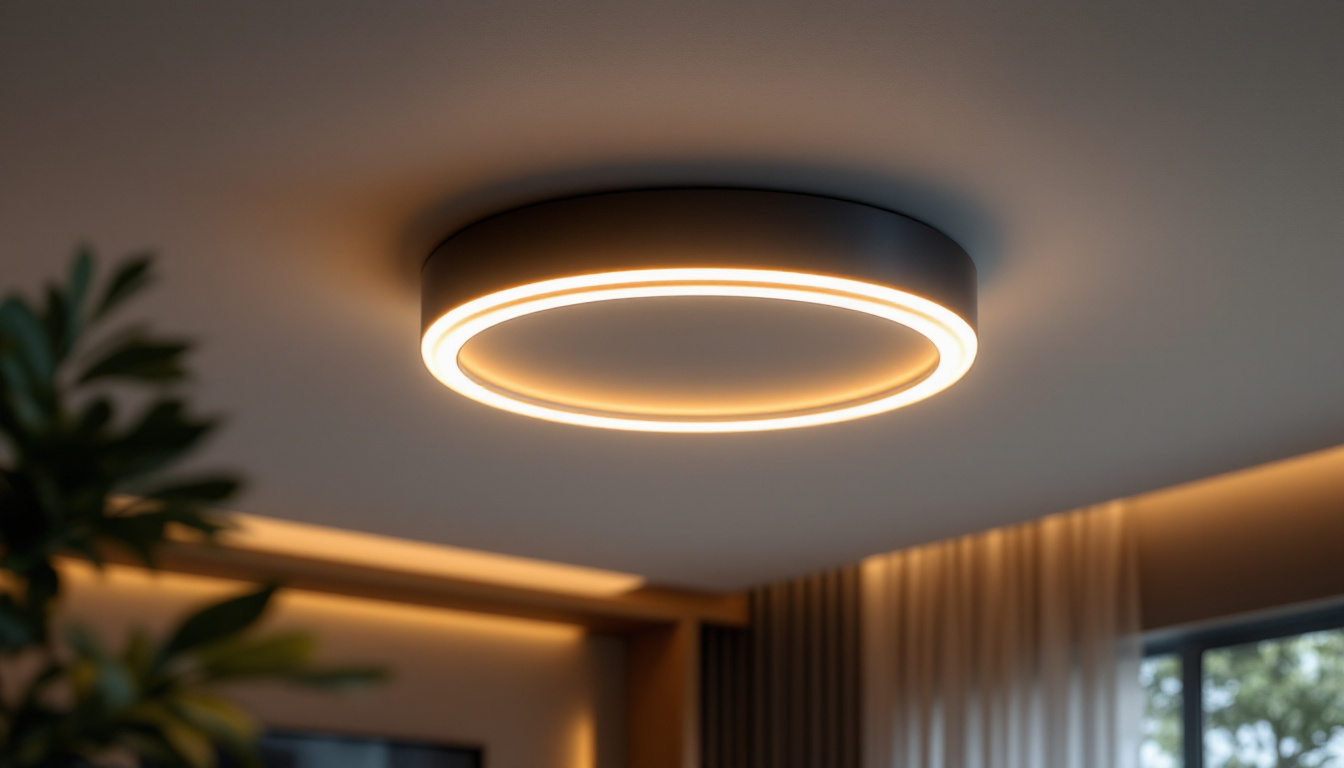
Lighting plays a crucial role in enhancing the aesthetic appeal and functionality of residential spaces. For lighting contractors, understanding the nuances of exterior lighting is essential to delivering outstanding results that meet client needs and preferences. This article provides expert advice on various aspects of exterior lighting for homes, including design considerations, types of fixtures, and installation tips.
Exterior lighting serves multiple purposes, from improving safety and security to enhancing the overall curb appeal of a home. Properly designed lighting can illuminate pathways, highlight architectural features, and create inviting outdoor spaces for relaxation and entertainment. In addition to its functional benefits, exterior lighting can also extend the usability of outdoor areas into the evening hours, allowing families to enjoy their gardens, patios, and balconies long after the sun has set.
Moreover, exterior lighting can significantly influence the mood and atmosphere of a property. Well-placed lights can transform an ordinary landscape into a stunning visual experience, making it essential for contractors to grasp the principles of effective outdoor illumination. Seasonal changes can also be accentuated with the right lighting choices, creating a dynamic environment that evolves throughout the year, from festive holiday displays to serene summer evenings.
One of the primary functions of exterior lighting is to enhance safety and security. Well-lit pathways, driveways, and entrances deter intruders and help prevent accidents caused by poor visibility. Lighting contractors should consider installing motion-sensor lights, which activate when movement is detected, providing an additional layer of security. These lights not only act as a deterrent but also provide peace of mind for homeowners, especially during late-night arrivals or early morning departures.
Furthermore, strategically placed lights can illuminate dark corners and blind spots around a property, ensuring that homeowners feel safe and secure in their surroundings. This aspect of exterior lighting is often a top priority for clients, making it essential for contractors to emphasize safety in their designs. Incorporating smart technology, such as app-controlled lighting systems, can further enhance security by allowing homeowners to monitor and control their exterior lights remotely, adding an extra layer of convenience and reassurance.
The aesthetic appeal of a home can be dramatically enhanced through thoughtful exterior lighting. By highlighting architectural features, landscaping, and outdoor living areas, lighting can create a visually striking environment. Contractors should consider using a combination of ambient, task, and accent lighting to achieve a balanced and inviting outdoor space. This thoughtful layering of light not only enhances the beauty of the property but also creates a welcoming atmosphere for guests and visitors.
For instance, uplighting can be used to accentuate trees or sculptures, while downlighting can create a warm glow over patios and seating areas. Understanding the interplay between different lighting types allows contractors to craft unique and personalized outdoor experiences for their clients. Additionally, the use of color-changing LED lights can add a playful element to outdoor spaces, allowing homeowners to customize their lighting to match their mood or seasonal themes. This versatility in design can transform a simple garden into a vibrant and enchanting retreat, perfect for gatherings or quiet evenings under the stars.
When it comes to exterior lighting, contractors have a wide array of fixtures to choose from. Each type serves a specific purpose and can be utilized in various design scenarios. Familiarity with these options is vital for contractors aiming to provide tailored solutions for their clients.
Pathway lights are essential for guiding homeowners and guests safely along walkways and driveways. These fixtures are typically low to the ground and can be solar-powered or hardwired. When selecting pathway lights, contractors should consider the height, brightness, and style to ensure they complement the overall design of the property.
In addition to functionality, pathway lights can also enhance the visual appeal of a landscape. Choosing fixtures that align with the home’s architectural style can create a cohesive look while providing necessary illumination.
Wall-mounted lights, such as sconces or lanterns, are versatile fixtures that can enhance the exterior of a home. These lights can be installed near entryways, on patios, or along garage walls, providing both illumination and style. When selecting wall-mounted lights, contractors should consider the scale of the fixture in relation to the wall space and surrounding elements.
Furthermore, wall-mounted lights can be used to create focal points or highlight specific areas of interest, such as a beautiful entry door or decorative architectural details. The right choice of wall-mounted lighting can significantly enhance the character of a home.
Flood lights are powerful fixtures designed to illuminate large areas, making them ideal for security purposes or highlighting expansive outdoor spaces. These lights can be mounted on walls or poles and are often adjustable, allowing for flexibility in directing light where it is needed most.
Contractors should consider the brightness and beam angle when selecting flood lights. A well-placed flood light can deter potential intruders while also providing ample illumination for outdoor activities, such as gatherings or sports.
Designing an effective exterior lighting plan requires careful consideration of various factors. Contractors must balance functionality, aesthetics, and energy efficiency to create a cohesive and appealing outdoor lighting scheme.
A layered lighting approach involves combining different types of lighting to achieve a well-rounded illumination scheme. This method typically includes ambient, task, and accent lighting, each serving a distinct purpose. Ambient lighting provides general illumination, task lighting focuses on specific areas, and accent lighting highlights architectural features or landscaping.
By employing a layered approach, contractors can create depth and dimension in outdoor spaces, making them more inviting and visually interesting. This technique also allows for flexibility in adjusting the lighting to suit various activities and moods.
With growing concerns about energy consumption and environmental impact, energy-efficient lighting solutions have become increasingly important. LED fixtures are an excellent choice for exterior lighting, as they consume significantly less energy than traditional incandescent bulbs and have a longer lifespan.
Contractors should educate clients about the benefits of energy-efficient lighting, including reduced electricity bills and a smaller carbon footprint. By incorporating LED fixtures into their designs, contractors can provide sustainable solutions that align with modern environmental standards.
proper installation is crucial to ensuring the effectiveness and longevity of exterior lighting systems. Contractors should adhere to best practices to deliver high-quality results that meet client expectations.
Before installation, contractors should carefully plan the layout of the lighting system. This involves assessing the property, identifying key areas for illumination, and determining the appropriate placement of fixtures. A well-thought-out layout can enhance both functionality and aesthetics.
Using design software or creating a physical mock-up can help visualize the lighting scheme and make necessary adjustments before installation. This step is essential for ensuring that the final result aligns with the client’s vision and enhances the property’s overall appeal.
When installing exterior lighting, proper wiring and power supply are critical. Contractors should ensure that all electrical components are rated for outdoor use and comply with local building codes. Additionally, using weatherproof connectors and enclosures can prevent moisture damage and prolong the lifespan of the lighting system.
For larger projects, it may be beneficial to consult with a licensed electrician to ensure that the electrical system can support the additional load from the new lighting fixtures. This proactive approach can help avoid potential issues down the line.
Once the exterior lighting system is installed, regular maintenance is essential to ensure its continued performance. Contractors should provide clients with guidelines on how to care for their lighting fixtures and what to look out for in terms of wear and tear.
Exterior lighting fixtures can accumulate dirt, dust, and debris over time, which can hinder their performance and appearance. Regular cleaning of fixtures, lenses, and bulbs is necessary to maintain optimal brightness and clarity. Contractors should recommend appropriate cleaning methods that are safe for the materials used in the fixtures.
Additionally, checking for any signs of damage, such as frayed wires or cracked lenses, should be part of routine maintenance. Addressing these issues promptly can prevent more significant problems and extend the lifespan of the lighting system.
Seasonal changes can impact the performance of exterior lighting. For instance, during winter months, snow and ice can obstruct light fixtures, while summer storms may cause damage. Contractors should advise clients to make seasonal adjustments, such as repositioning fixtures or using protective covers, to safeguard their lighting systems.
Moreover, adjusting the timer settings for outdoor lights can help optimize energy use and ensure that the lighting remains effective throughout the year. This proactive approach to maintenance not only enhances the functionality of the lighting system but also demonstrates a commitment to quality service.
Exterior lighting is an essential component of residential design, providing safety, security, and aesthetic appeal. For lighting contractors, understanding the various types of fixtures, design considerations, and installation techniques is crucial to delivering exceptional results. By employing a layered lighting approach, utilizing energy-efficient solutions, and adhering to best practices for installation and maintenance, contractors can create stunning outdoor spaces that meet the unique needs of their clients.
As the demand for outdoor living spaces continues to grow, staying informed about the latest trends and technologies in exterior lighting will empower contractors to remain competitive in the industry. By offering expert advice and tailored solutions, lighting contractors can enhance their reputation and build lasting relationships with clients.
Ready to elevate your exterior lighting projects with the finest selection of spec-grade fixtures? Look no further than LumenWholesale. Our commitment to quality and affordability ensures that you have access to the best lighting products at wholesale prices, without the extra costs. From safety-enhancing floodlights to aesthetically pleasing pathway lights, our extensive range meets the highest industry standards. Plus, with the convenience of free shipping on bulk orders, you can provide your clients with premium lighting solutions that fit their unique needs. Take the first step towards a brighter future for your business and explore our Wholesale Lighting at the Best Value today.

Discover the ultimate guide to LED tape dimmers with our essential checklist tailored for lighting professionals.

Discover how dusk to dawn outdoor solar lights can revolutionize your lighting installation projects.

Discover why lighting contractors should prioritize round LED ceiling lamps in their projects.

Discover how bypassing a ballast can revolutionize your lighting projects and enhance your business efficiency.